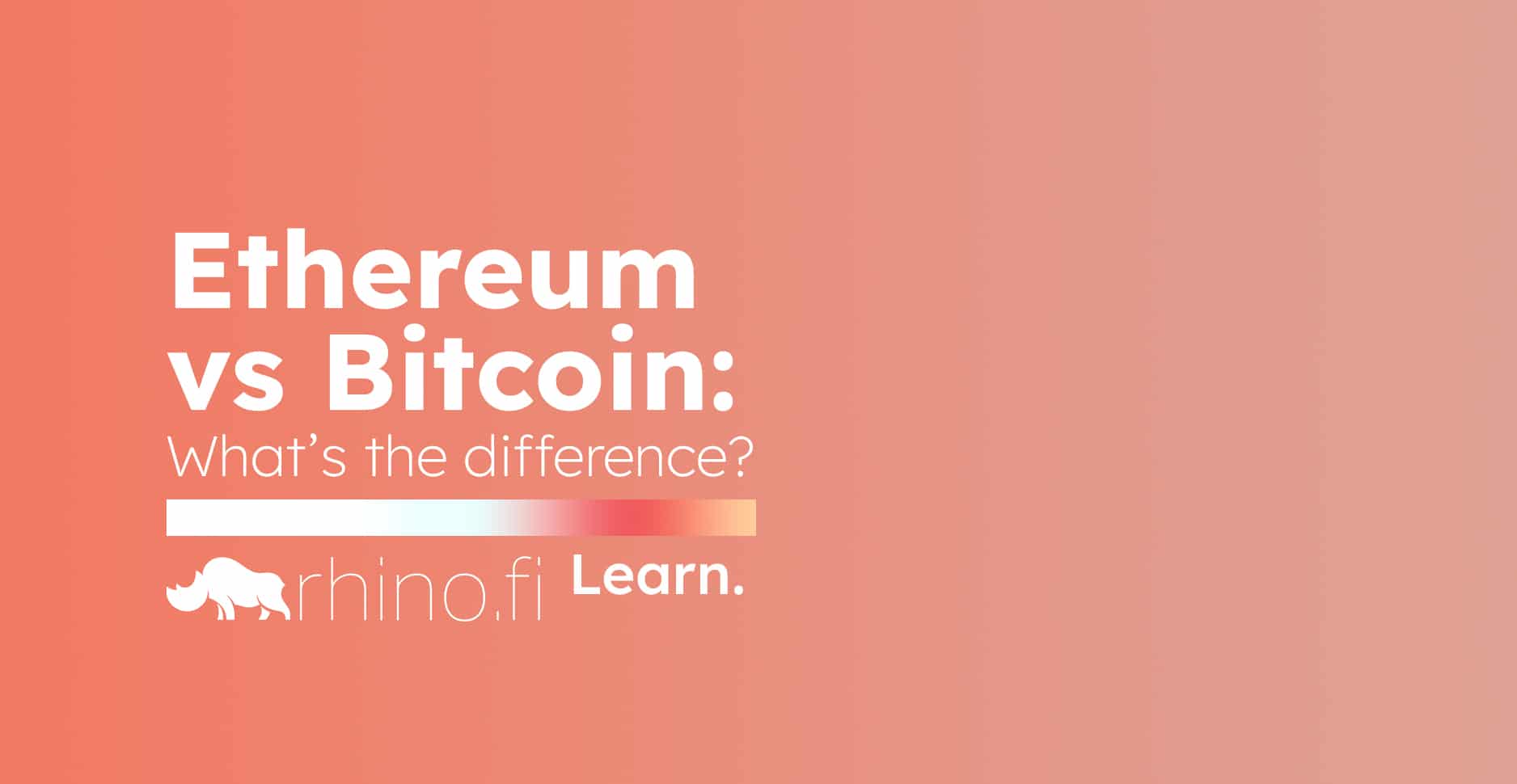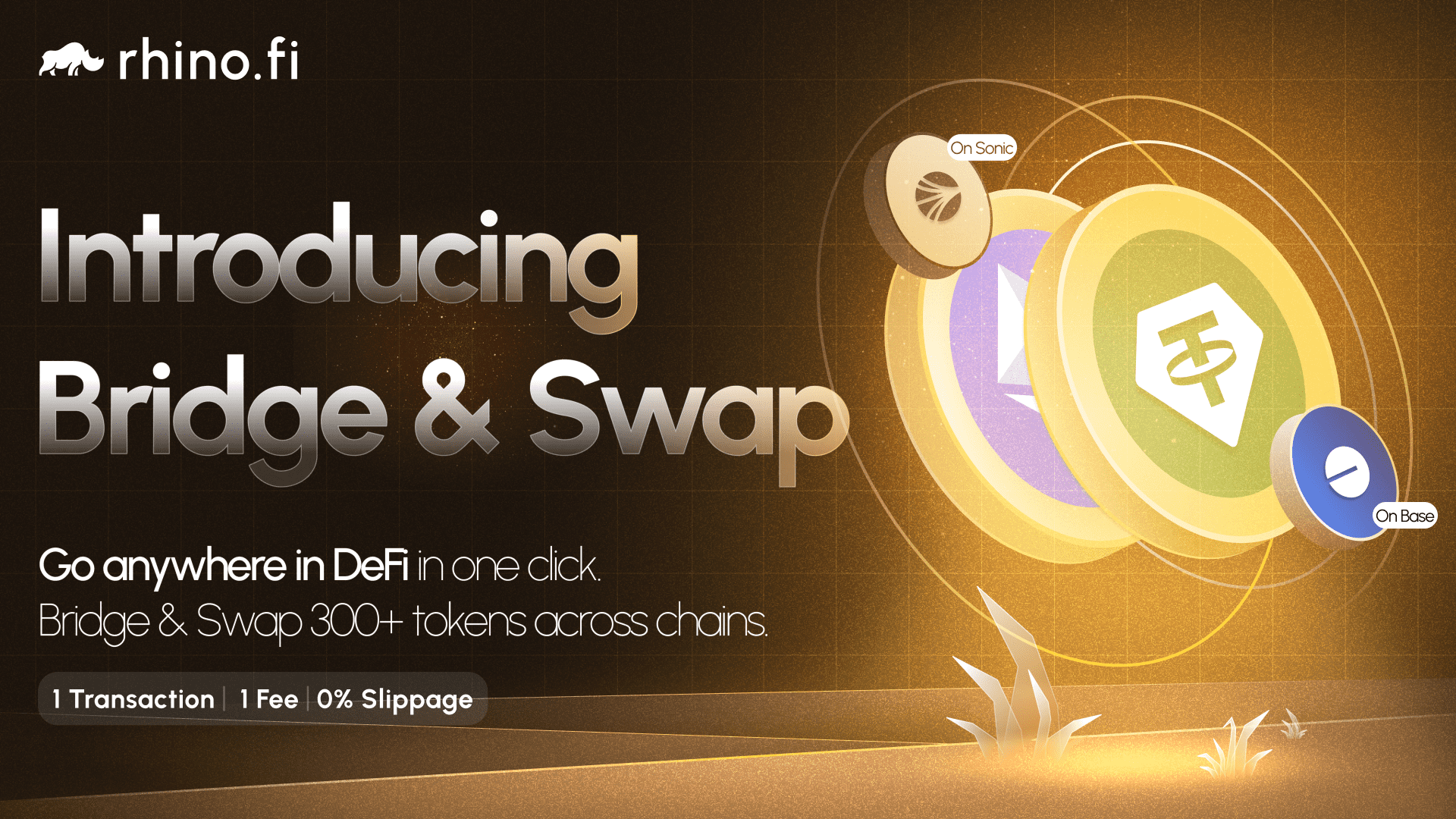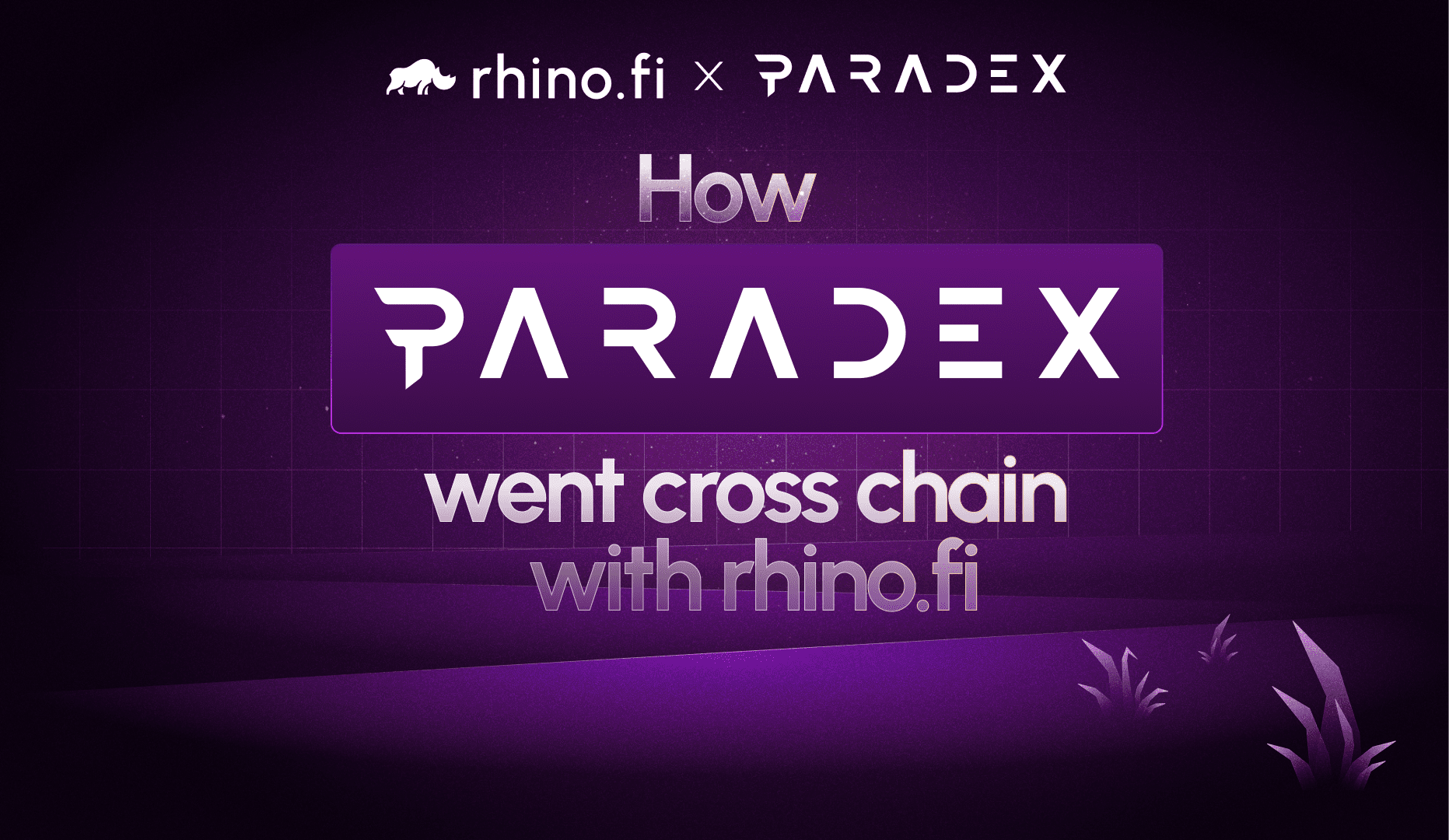When crypto hit the mainstream back in the mid (20) teens, there was only one currency anyone had heard of: Bitcoin.
In fact, the two terms became almost interchangeable, like Hoovers and vacuum cleaners. Bitcoin was crypto. Crypto was Bitcoin.
But now Ethereum has come to rival Bitcoin, like the Nike and Adidas of blockchain projects. In fact Ethereum has now outstripped Bitcoin by most metrics: it receives over four times as many transactions as its more established rival.
To many casual observers, the two projects are just competing currencies, vying to be the world’s favourite form of ‘digital gold’. But in fact it’s far more complicated than that. And in this edition of RhinoLearn we’re going to go deep into the issue and explain how the ‘big two’ of the crypto world differ.
A range of possibilities
Ethereum and Bitcoin have plenty of similarities, to be sure. But their range of possibilities varies dramatically.
Put simply, Ethereum goes way, way further.
When the Bitcoin currency was first minted back in 2009 by the reclusive developer Satoshi Nakamoto, it was described as a “peer-to-peer electronic cash system”. And that’s essentially all it is: an instrument of value. The blockchain that underpins it is basically a giant financial database, listing the amount of Bitcoin each user possesses.
The Ethereum blockchain, by contrast, has been built as an entire decentralised ecosystem. You can write and deploy your own programmes on Ethereum, and you can interact with the programmes that other developers have built.
Like the Bitcoin blockchain, Ethereum houses its own native currency, Ether. Just like Bitcoin, Ether, or ETH, carries monetary value and is traded on multiple exchanges. It’s also used to reward ‘miners’, the people who offer up their computers to add new transactions to the Ethereum network. Essentially, these miners maintain a record of all transactions and so keep the network running.
However, unlike Bitcoin, the Ethereum blockchain also hosts an array of semi-independent tokens. These currencies, known as ERC20 tokens, have been built by autonomous projects on the Ethereum platform and are traded according to its core regulations.
Additionally, the Ethereum blockchain is host to a galaxy of applications including games, forums and investment platforms. These projects run on a decentralised network, which means there’s no central body controlling everything. In practical terms, this means that they can’t be shut down or censored.
These decentralised applications have given rise to what is now known as decentralised finance, or DeFi for short. Users from all around the world are able to interact with these applications to swap tokens, borrow and lend assets, or stake their tokens for APY interest… and that’s just scratching the surface.
So whereas Bitcoin is really just a financial instrument (albeit an extremely successful and influential one), Ethereum has the potential to be so much more.
If its founders’ vision is realised, Ethereum will become a hub for the global crypto community and a gateway to genuine decentralisation. It will maintain its own currency, but its wider value will be immeasurable.
So, to summarise:
- Bitcoin is purely an instrument of value. Ethereum is an entire ecosystem that allows developers to write and deploy their own code on the network.
- Like the Bitcoin blockchain, Ethereum has its own native currency, called Ether. This is a token that possesses financial value and rewards the miners who keep Ethereum running.
- However, whereas Bitcoin is a standalone currency on its own dedicated blockchain, a whole host of additional tokens have been created on the Ethereum network. These are known as ERC-20 tokens.
- Additionally, Ethereum is host to thousands of applications. Because Ethereum is a decentralised network, applications built on top of it cannot be shut down.
- In fact, Ethereum is a hub for DeFi – which we see as the true ‘end state’ for crypto.
Enjoyed this installment of RhinoLearn? Check out our explainer on layer 1 vs layer 2 for a more detailed explanation on how Ethereum works in practice.





